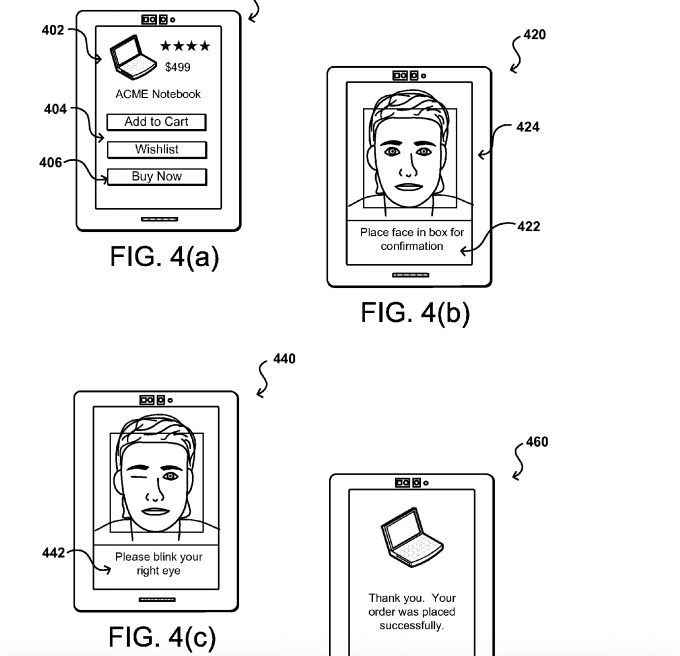If Amazon manages to follow through on its recent application to the U.S. Patent & Trademark Office, its customers might one day be able to verify purchases via action-oriented selfies. According to the patent application filed Thursday, Amazon has developed an image-based authentication system that uses facial recognition technology and sensors to detect an action like blinking to verify a user’s identity during a transaction.
The system could do away with some of the drawbacks of using passwords for authentication, according to Amazon’s application. Unlike passwords that can be stolen or can be hard to input on the small keyboards of mobile devices, a facial recognition system can verify a user’s identity and — with the help of a blink, smile or tilting of the head — confirm the person is a live human and not a photograph.
Similar Tests by Mastercard, Alibaba
Amazon did not respond to our request for more information. However, in its patent application the company said, “As people are utilizing computing devices for an increasing variety of tasks, there is a corresponding need to improve the security available for these tasks.”
A smartphone or other camera-enabled computing device, “can capture image information for use in performing facial recognition to determine an identity of the user,” according to the application. With instructions to carry out an additional action like blinking or gesturing, the user can then “verify that the image information corresponds to a physical being and not a representation of a user, such as may be provided through a picture or video of a user.”
Last year, MasterCard introduced a similar system called MasterCard Identity Check. That system is expected to become available in the U.S. sometime in the middle of this year. China-based Alibaba also began testing a facial recognition-enabled payment system last year.
When it announced MasterCard Identity Check in October, MasterCard noted that such a system could help speed up and simplify online transactions by avoiding the need to direct customers to third-party payment verification systems.
“The use of technology and data will move from a reliance on what the consumer knows (passwords), to what they have (mobile phone or other smart device) and who they are (biometrics),” the company said when it announced trials of the system in the Netherlands and the U.S.
Biometrics Address Fraud, Simplicity Concerns
A survey of 10,000 consumers conducted by MasterCard found that more than half — 53 percent — forgot important passwords “more than once a week.” The subsequent process needed to reset their passwords typically took more than 10 minutes, according to the survey.
“As a result, more than a third of people abandon an online purchase, while six in 10 said it led to missing a time-sensitive transaction like buying concert tickets,” MasterCard said. “More than half of people want to see passwords replaced by something more convenient, while continuing to deliver the same levels of protection and peace of mind.”
Brendan Miller, an e-business and channel strategy analyst with Forrester Research Inc., told us that biometrics can help businesses overcome the two diametrically opposed challenges they face: reducing fraud in online purchases and simplifying payment processes for customers. Biometric technology “kills two birds with one stone,” he said.
While many consumers might currently find fingerprint-enabled verification — such as that used by Apple Pay and Samsung Pay — “less creepy” than facial recognition, the market for different types of biometric authentication systems will probably remain wide open for a while, Miller said. Other technologies emerging in the space include heartbeat recognition, voice recognition and iris scans, he said.
Image Credit: Amazon pay-by-selfie patent via United States Patent and Trademark Office/Amazon.







